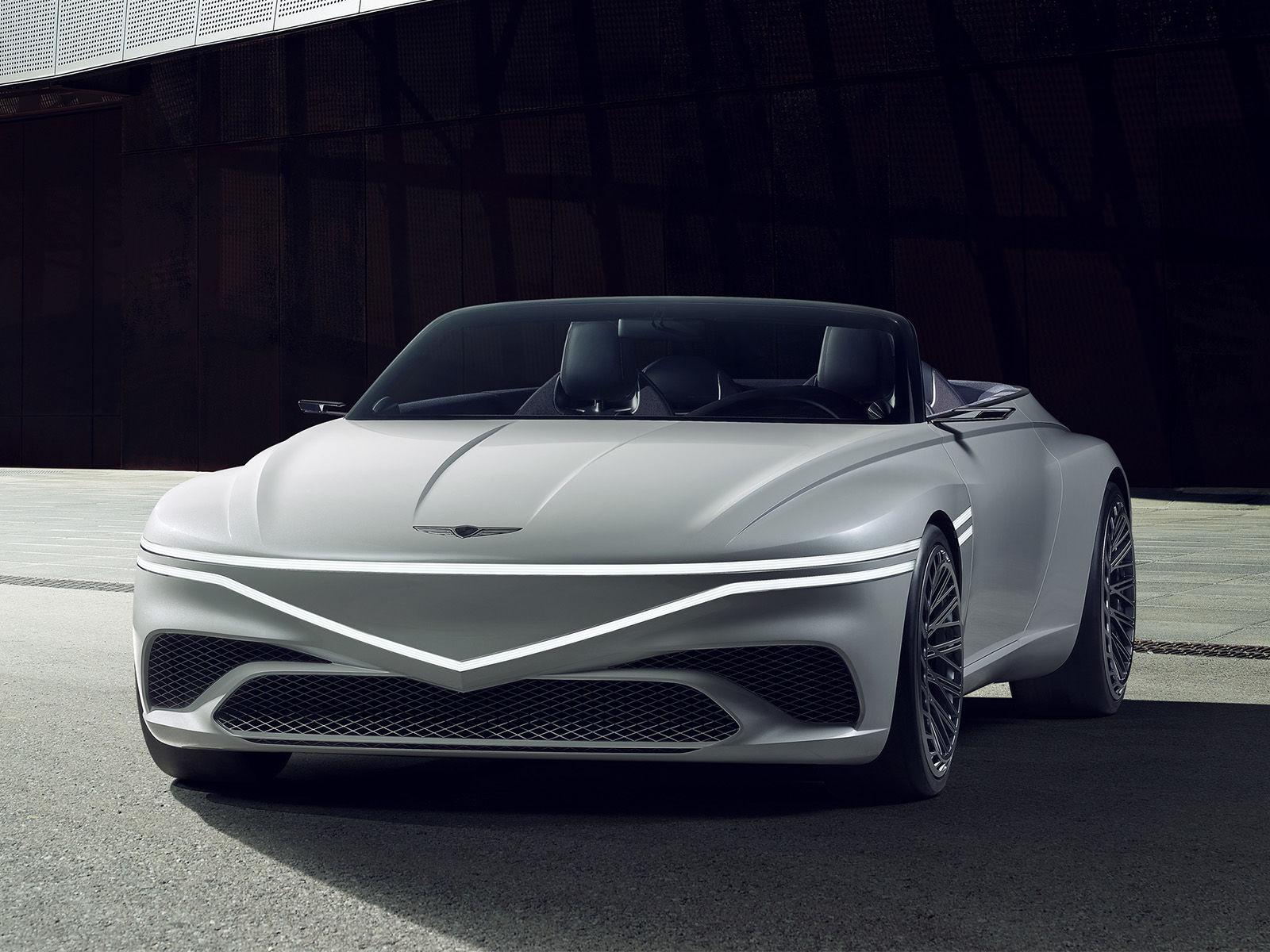
Patent-Pending. PCT International Application in Progress.
Korean Patent Application: 10-2023-0045299
💡 What It Is
“Under Display Headlight™” (officially titled Headlamp Assembly for Vehicle in the patent) is a next-generation automotive lighting architecture. It physically positions the high-intensity main headlight system behind a transparent display layer.
The result is a “Hidden Tech” aesthetic: when the headlights are off, the front of the car appears as a seamless digital surface or a uniform Daytime Running Light (DRL). When turned on, the main beams project through the display hardware without mechanical movement.
⚠️ The Problem
Modern automotive design faces a conflict between aesthetics and function:
- The “Dead Eyes” Look: Main headlights require transparent covers to project light, which creates dark, empty “holes” in the car’s design when turned off.
- Mechanical Complexity: Recent attempts to hide headlights (like the Volvo EX90) rely on mechanical actuators and “eyelids” to reveal the lamps. While innovative, these introduce moving parts that can freeze, fail, or delay the transition between lighting modes.
- Space Inefficiency: Traditional setups require separate real estate for DRLs (Daytime Running Lights) and main projectors, cluttering the front fascia.
🛠️ The Core Technology
How does a high-beam headlight pass through a digital screen without melting it or losing brightness? This invention utilizes three key engineering innovations:
1. Cathode-Patterned Transparent Display
Standard OLEDs use an opaque cathode (negative electrode) that covers the entire pixel backplane.
- The Innovation: We utilize a modified display (OLED or Micro LED) where the cathode is selectively removed or patterned.
- The Light Path: The cathode material is etched away specifically in the gaps between the sub-pixels (Red, Green, Blue) or between pixel groups. This creates physical “windows” at the microscopic level, allowing the high-intensity light from the upstream headlight to pass through the display panel with minimal obstruction.
2. Micro Lens Array (MLA) Beam Steering
Passing light through a pixel mesh causes diffraction (scattering). To counter this, we integrate a Micro Lens Array (MLA) layer directly adjacent to the display.
- Collimation: The MLA straightens the light rays, ensuring the beam remains focused and intense after passing through the display screen.
- Solid-State Matrix: By designing specific optical geometries into the micro-lenses (aspheric, freeform, etc.), the system can steer light in different directions (Up/Down/Left/Right) without any motors.
3. Glare-Blocking Polarization
To prevent the “screen door effect” from scattering light upwards into the eyes of oncoming drivers, an optional polarization layer or louver film blocks stray vertical light rays, ensuring the beam strictly follows the road.
🧠 Intelligent Control Logic
Since the “lens” of the headlight is now a digital display, the lighting system becomes software-defined. The patent describes a Sensor-Integrated Controller that changes the display content based on real-time context:
| Scenario | System Action | Patent Reference |
|---|---|---|
| Parking Mode | Displays the driver’s contact info (e.g., phone number) or a custom welcome animation when the engine stops. | Claim 15 |
| Scenic Routes | Uses GPS/AI to detect the environment. For example, passing a cherry blossom road triggers a falling petal animation on the headlights. | Par. [0059] |
| Auto-Leveling | Gyro sensors detect the car’s incline. The system activates specific LED groups and MLA zones to aim the beam down, preventing glare without mechanical leveling motors. | Par. [0066] |
| Safety Comm. | Displays symbols or warnings to pedestrians (V2P) based on speed and proximity sensors. | Par. [0055] |
🏙️ Where It Fits (Applications)
- EV Front Fascias: Perfect for electric vehicles that do not need traditional grilles, allowing the entire front end to become a “Communication Belt.”
- Autonomous Pods: Self-driving vehicles can use the display to signal intent (“I am stopping,” “Go ahead”) to pedestrians since there is no driver to make eye contact.
- Law Enforcement: Unmarked police vehicles can look like standard civilian cars, then instantly switch the DRL display to flashing red/blue emergency strobes.
📜 Patent Claims Summary
The filed patent explicitly covers:
- The Assembly: A vehicle headlamp comprising a display layer and an upstream light source.
- The Method: Removing the cathode electrode in the light path to maximize transmittance.
- The Optics: The use of Micro Lens Arrays (MLA) and Aspherical Lenses for beam collimation and direction control.
- The System: Integration of environmental sensors (speed, rain, distance) to dynamically alter the display content.